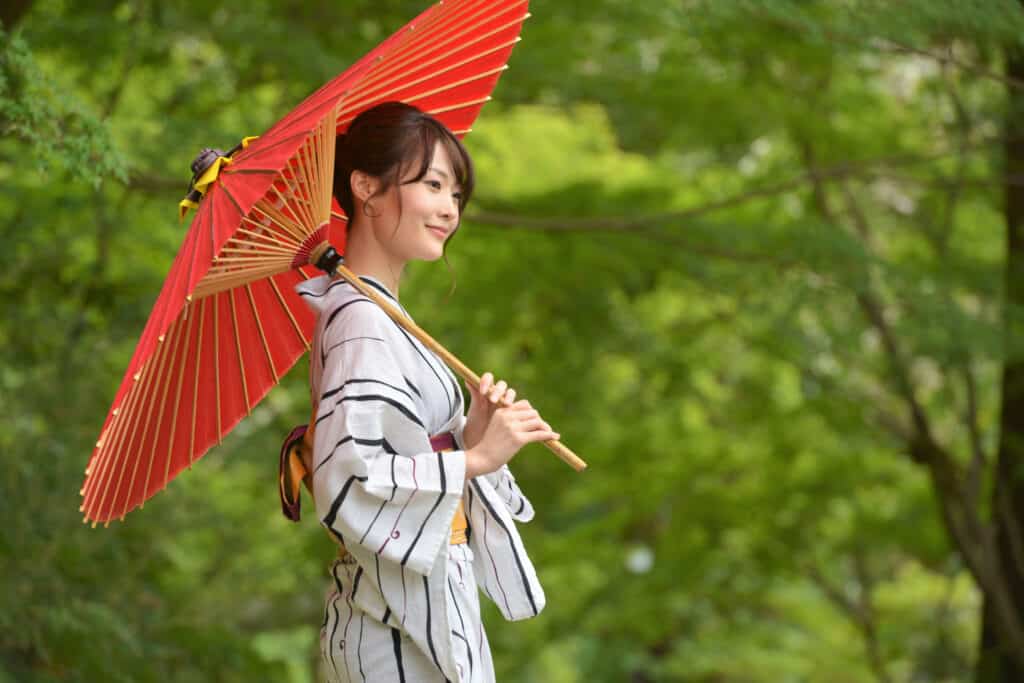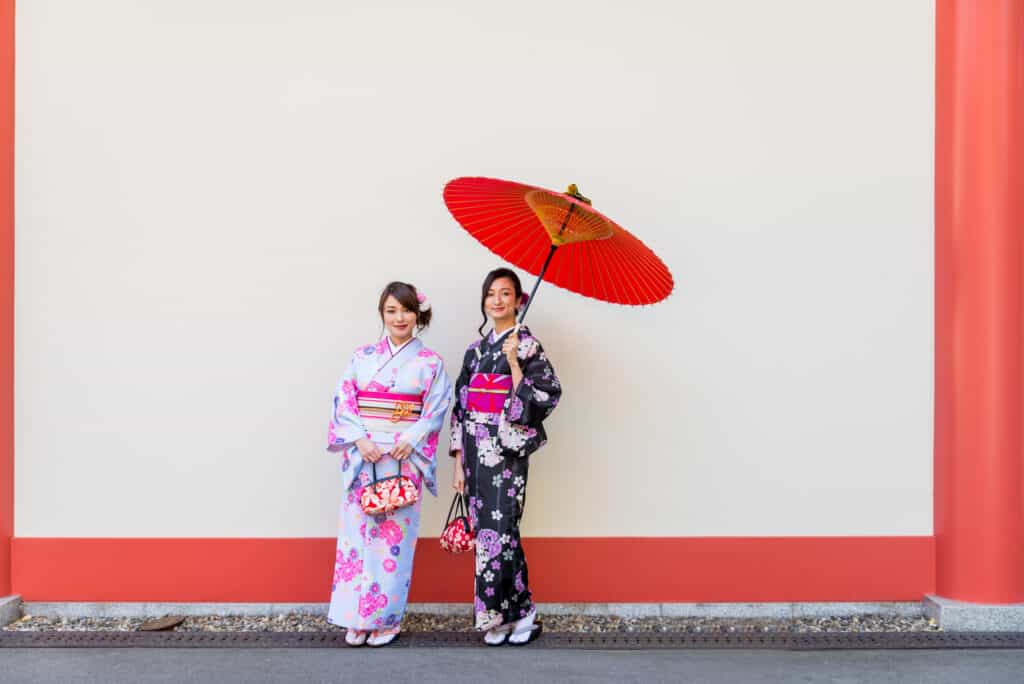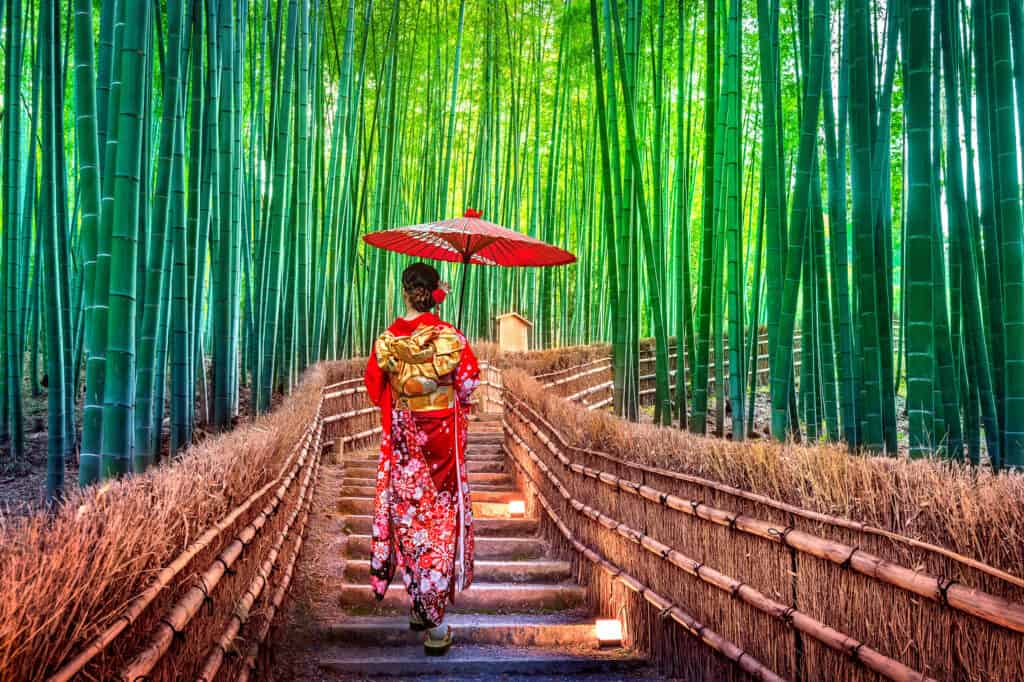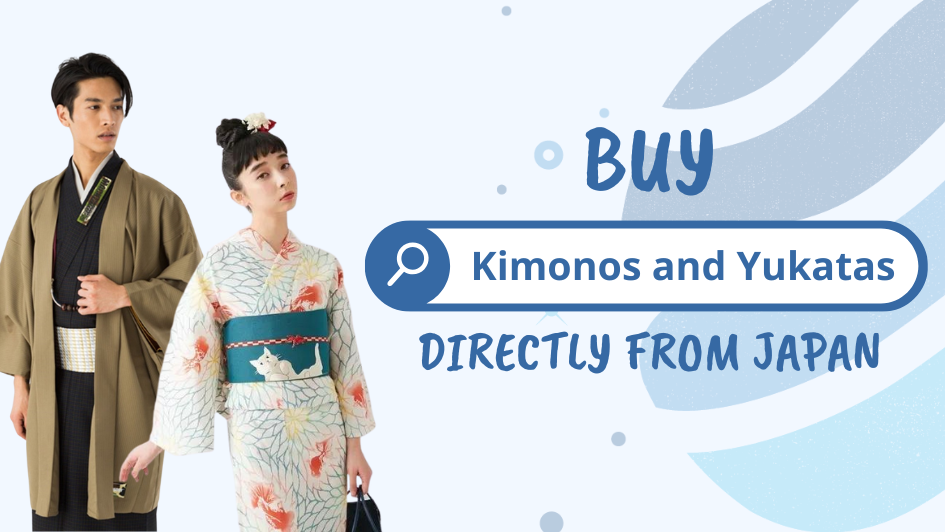Kimonos are absolutely beautiful, and many people want to purchase one. But how much does an authentic kimono cost, and why are they so expensive?
Kimonos cost $40 to $800 or more depending on the fabric they are made of and the specific designer who made them. Kimonos are typically made out of linen, cotton, silk, or wool, although some kimonos are made out of polyester. A kimono is a traditional Japanese garment that's shaped like a T.
Now that you know a little about what kimonos are and how much they cost, you may be wondering exactly why they are so expensive and where you can purchase one.
*We highly recommend sending parcels containing kimonos via either DHL, EMS, Zen Express, Airmail, or Surface (Surface takes about 3 months for delivery).
*When textiles and bags are sent to the United States, we are often asked for documentation from the manufacturer that details the exact materials used in the creation of these types of products by the United States border agent when using DHL, Fedex, and some other shipping providers. As ZenMarket is a buying service and unaffiliated with the manufacturers of these products, we are unable to procure these documents, meaning there is a high likelihood that parcels shipped using these methods may be returned at buyer's expense.
*When shipping textiles and bags to the United States, we strongly recommend shipping via EMS, AVIA, Surface, or ZenExpress. If shipping bags, UPS is also a viable option. When shipping via these methods, we tend not to be asked for the same level of documentation, meaning these parcels go through without issue in most cases. When shipping textile items via UPS or FedEx to the USA, there is a very high chance of your parcel getting stuck in customs or sent back to Japan.*
How Much Do Authentic Kimonos Cost?
Authentic Japanese kimonos can cost between $40 to $800 or more, depending on the material they are made out of, the pattern, and the person who designed the garment. Silk kimonos are very expensive, and it is not unheard of for someone to pay over $10,000 for a silk kimono made by one of the famous designers, otherwise known as Japan's Living National Treasures.
Japan's Living National Treasures are officially recognized as master craftsmen, and their unique kimonos are regarded as works of art. This. obviously makes them much more expensive than other kimonos.
Wool kimonos typically cost around $240, although the price can vary depending on the experience of the kimono maker and any designs that are on the fabric.
Silk kimonos cost about $245 for an everyday silk kimono, and formal silk kimonos can cost over $800.
Simple cotton kimonos cost about $40. Oddly, simple cotton kimonos are displayed in stores next to silk kimonos in many department stores in Japan. However, the differences between the two garments are fairly obvious because the fabrics look very different. It's pretty common to see cotton and silk kimonos available for sale in the same place, though.
There are many different types of kimonos, but the two main types of kimono are the traditional kimono that many people think of when they think of kimonos, and the yukata, which is a kimono made of a lighter fabric than the traditional kimono.

Shop Kimonos Now!
The yukata is a very simple kimono that is typically made out of cotton.
It is worn during the summer months, and they are meant to be worn every day. Although formal kimonos generally are only worn by women, both men and women wear yukatas. Yukatas don't have an inner lining as many other kimonos do. Yukatas typically cost $20 to $40 and can be worn and washed many times before they start to show signs of wear and tear.
Traditional kimonos are very versatile and can either be worn every day or worn only during formal events. Silk kimonos are typically only worn on formal occasions because they are so beautiful and expensive. Depending on the quality and pattern of the silk, silk kimonos can cost $245 to $800. Machine-made silk kimonos will cost less than hand-made silk kimonos.
Why are Authentic Kimonos So Expensive?
Authentic kimonos are very expensive because they have to be hand-made most of the time.
Many of us are used to cheaper clothing prices because of the machine-made goods we see everywhere. Although cotton kimonos can be made with a sewing machine, silk kimonos have to be hand-sewn, and silk (especially natural silk) is very expensive.
The pattern on the fabric of the kimono also contributes to the price of authentic kimonos. Some fabrics that people use for kimonos only have a pattern printed on the outside of the fabric. Designs are typically printed with a machine, and some fabrics are hand-dyed. The hand-dyed fabrics will be much more expensive than the one-sided and machine-printed fabrics.
Kimonos are expensive because the people who make them have to go through special training.
They also have to prove that they can finish making a kimono from scratch in 8 hours before they are considered to be professionals. This is their job, and they need to make enough money to purchase new fabrics and support themselves. Kimono sewing is also considered to be a sort of craft, and crafts cost a lot of money.
Kimonos have a lot of pieces to them, which increases the price of the overall kimono as a set, although authentic Japanese kimonos are not sold in a set because they are custom-made. One of the pieces that are part of the kimono ensemble is the obi, the outer belt that never seems to quite match the kimono. The obi is actually not supposed to match the kimono, and large obis made with many patterns and thread can cost up to $500 alone.
Only kimonos that are supposed to be sold to tourists are sold in a set.
Kimonos that have a matching obi included are made to appeal to tourists. This is often the case because many people outside of Japan think that matching garments are more visually appealing than un-matched garments that are worn together.
Kimonos represent many things and are a way to communicate certain things about the person who is wearing them. When someone is wearing a kimono with long sleeves, and the length of the sleeves are 7 and 4/5th of an inch away from the ground, when the wearer stretches out their arms, they are young and unmarried.
If you go to a traditional Japanese wedding and the bride is wearing a kimono, their sleeves will be touching the ground. Older married women will wear kimonos that have much shorter sleeves than the kimonos that young unmarried women wear.
When kimonos are dyed with bright colors, the person wearing the kimono is young and unmarried, and as people get older, they wear kimonos that are dyed with darker colors. Widows typically wear kimonos that are gray, black, or brown. However, widows are not the only people who wear black kimonos.
If a woman is married and wears a kimono to a formal event, their kimono will likely be black. However, it doesn't have to only be black. The skirt of the formal black kimono will likely have a lot of gold embroidery, especially if they are going to a very formal event.
Kimonos have a lot of symbolism, and they are a very important part of Japanese culture. They are expensive because they are both a necessity and a luxury.

Where Can I Purchase A Kimono?
You can purchase a kimono online or in person and it's also very easy to buy Kimono throug ZenMarket.
For those living in certain countries buying Kimonos online may be your only option. Especially if you are wanting to purchase an authentic kimono. Most sites will have pre-set sizes and or ask for your personal measurements. This will usually be very expensive since authentic kimono stores usually don't sell their kimonos in a set.
Yamato Kimono Online Store
Yamato Kimono is a store that you can find throughout Japan from the north in Hokkaido to the southern parts of Kyushu. They carry kimonos for women, men, and even children. After doing a brief search on their online store, you can easily put together matching sets. Casual kimonos on their sites are available as low as $100, while some are as high as $5000! Their website is easy to navigate, and you can also change the language settings to English! Click here to go to their casual kimonos.
ZenMarket can purchase these items for you buy just pasting the product link on the search bar on our website! Make sure to put the details of your items, like the size, color and additional information.
Senseido
If you are looking for a kimono for yourself but also want something that you can pass down to other family members, then Senseido is an excellent option. Senseido is definitely on the expensive end of the spectrum for kimonos. Even their second-hand kimonos run for about $800! Some of their kimonos are made from authentic Yonaguni traditional textile (AKA Yonaguni Ori).
Yonaguni Ori is made in Yonaguni Town in Okinawa. All of the dyes used for the Yonaguni Ori are made naturally from plants on the island. After the textiles are dyed, they are then hand-woven!
Click here to take a look at Yonaguni Ori Kimonos as well as other traditional textiles. Or, click here to look at their whole kimono selection!
ZenMarket can purchase these items for you buy just pasting the product link on the search bar on our website! Make sure to put the details of your items, like the size, color and additional information.
Interested in Kimonos? Sign Up Now!
Kururi
Kururi, in regards to price, falls somewhere in the middle of Yamato Kimono and Senseido. They have a large collection of casual and formal kimonos. Kururi also has a selection dedicated to washable kimonos. The washable kimonos are made by a higher quality polyester so even though they are easier to maintain, they still contain a high-quality look and feel. Click here to check out their selection of washable kimonos.
For those who love denim, Kururi also has a selection of kimonos for you! Even though their denim kimono selection is not as large as their others, they have a large range of variety in denim that you'll easily find something that you love. Click here to give them a look.
ZenMarket can purchase these items for you buy just pasting the product link on the search bar on our website! Make sure to put the details of your items, like the size, color and additional information.

What Are Kimono Accessories Called?
Now that you have picked out a Kimono, you need the necessary counterparts as well as accessories!
An obi is a necessity! Obis can range from being one solid color to intricate patterns. Because of this, you can wear an obi with more than one kimono. Some even come reversible, where both sides of the obi can be used as the outer side.
Yamato Kimono has a large selection of obis.
Their selection is perfect for everyone as they carry a large variety of colors, patterns, and styles. A few in their selection are "pre-made" obis, meaning that the bow that you regularly see on a kimono is already done for you.
Senseido also has a large selection of obis as well.
Their patterns and fabrics do lean more towards the formal side compared to Yamato and Kururi. For those with a mature sense of style and who don't want to go through many different styles to find something right for you, Senseido's obi collection may work great for you. But keep in mind that Senseido as a whole is on the more expensive side compared to other kimono stores.
Kururi carries a selection of reversible obis.
They do all cost over $100 each, but because they are reversible, it will be like buying two obis in the place of one. They also have a section for Fukuro-obi, which is what is commonly worn with formal kimonos. Their website separates the types of obis they have, so it'll be effortless to find the right obi for you.
Other fun accessories include Kanzashi hairpins! The Kanzashi hair pins are perfect for elevating an up-do when wearing kimonos. They can be as dramatic or subtle as you like. Obijimes are another great accessory. Obijimes are tassels that you can use to decorate your obi. They all come in different colors and designs and are a great addition to any obi. Even if the obi has intricate designs an obijime can complement it.
Also Read: WHERE TO BUY JAPANESE FASHION IN JAPAN
Is It Disrespectful To Wear A Kimono?
It is not disrespectful to wear a kimono if you are not Japanese.
Most Japanese people do not consider it a cultural offense when someone not from Japan wears a kimono. Many kimono seamstresses cater to tourists and hold classes that show people part of the process of how to make a kimono.
This is great because it means that if you go to Japan and you are not Japanese, you can still wear a kimono and not feel like you are being rude.
Kimonos are fascinating Japanese garments that can tell you a lot about the person that is wearing them. Unfortunately, high-quality kimonos are very expensive, but they are worth it to the people who purchase them. Kimonos are handcrafted and are sometimes considered to be works of art, after all. Luckily for Japanese tourists and Japanese enthusiasts, it is not considered to be disrespectful if people who are not from Japan want to wear a kimono.
Have you signed up for ZenMarket yet?
ZenMarket is the place to get your hands on goods directly from Japan!
Sign up for FREE now

